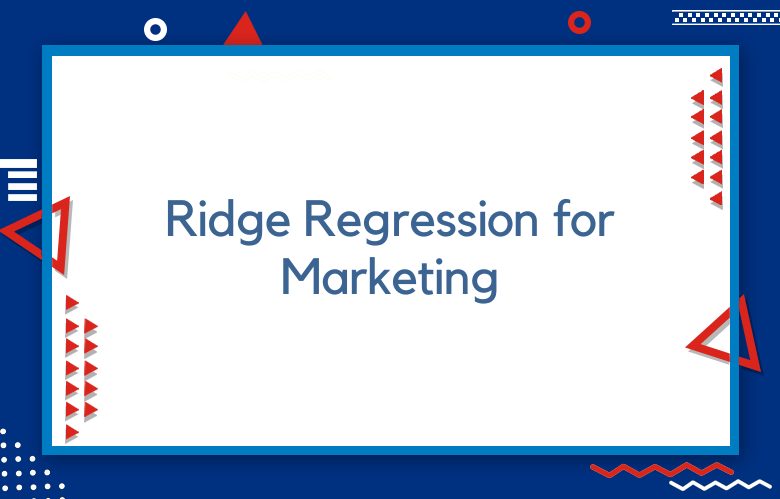Google Shopping Feed Optimization: Best Practices for Google Merchant Center Feed Optimization

The best practices for Google Shopping Feed Optimization can help your products show up in more places and drive traffic to your site. The Google Merchant Center (GMC) is a tool that can be used by sellers on the Google platform to manage product data, inventory levels, promotions, and more with just a few clicks. We’ll walk through how you can use GMC to improve your chances of getting found when searching online.
Google’s algorithm updates are constantly changing, so companies need to stay informed about what these changes might mean for their business and adjust accordingly as needed. One of the most recent updates has been focused on shopping feed optimization.
Do you want to make your products rank higher in the Google Shopping Feed? If so, this post is for you. It will discuss some of the best practices that are available for optimizing your Merchant Center account and receiving a better ranking on Google’s SERPs.
This blog’s audience is primarily eCommerce websites looking to increase their visibility within the Google Shopping feed. The tone should be professional, with a slight hint of excitement about all of these great tips that could help improve rankings!
What is Google Shopping Feed Optimization?
The only goal is to increase the number of clicks that a merchant has for their ads. The higher quality and quantity of these clicks are essential because they represent sales.
Google Shopping Feed Optimization (Fo sho) is a service that allows you to optimize your product ads so that they appear in more relevant spots.
Google Shopping Feed Optimization is the process of optimizing your products for Google’s shopping feed, which will help you get more sales and increase your revenue.
Google Shopping Feed Optimization is an important Google algorithm that helps improve your product listing.
Best Practices for Google Merchant Center Feed Optimization
There are many things to do when optimizing your feeds, but these three tips will help you get started.
Google Merchant Center is an advertising platform that allows advertisers to reach their target audience. It can be used for multiple purposes, such as increasing interest in a brand or driving traffic to the website.
Google Merchant Center feed optimization is relatively straightforward.
If you’re hunting for ways to optimize your product data feeds, here are a few best practices I recommend. Firstly, make sure that the products listed are unique and relevant to what your customers want.
- Use the same title, description, and product name on all your listings
- Keep your feed organized by category or type of product
- Include more than one image per listing
- Add a video to some listings for added interest
- Write clear descriptions that include key features and benefits of the products you’re selling.
- Give customers a way to contact you with questions about your products
- Select the appropriate category for your products
- Add product attributes such as size, color, and price
- Upload high-quality pictures of your products with accurate descriptions and prices
- Use keywords that customers are likely to search for to increase traffic to your store
- Create a Google Merchant Center account
- Upload your product information to the feed, including image and description.
- Set up automatic feed updates with Google Feed API or by using an RSS feed reader like Feedly.
- Use keywords in the title of your products to help customers find what they’re looking for more easily on search engines.
- Optimize your website’s meta tags so that it ranks higher when people are looking for specific items online.
- Create a catalog feed with your products.
- Optimize your product descriptions for search engines by including keywords in the following order: nouns first, adjectives second, and adverbs third.
- Please choose a category to assign to each of your products so that customers can find them more easily.
- Use UPCs when possible instead of EAN or ISBNs.
- Use a product feed service to automate the process of updating your product feeds.
- Consider using an automated, rule-based system if you have many products or are not tech-savvy.
- Include a photo and description of each product in the feed, as well as key features and benefits.
- Create separate feeds for each category of products that you sell, such as apparel, electronics, etc., so Google can identify them quickly when it crawls your site.
- Try to keep your descriptions under 120 words (Google will truncate any text longer than this)
- Make sure all links on the page go back to your website and not another company’s site.
- Use the same product title, description, and image for all your products
- Keep your feed organized with subcategories to make it easier for customers to find what they’re looking for
- Add a few new items every week to keep people coming back
- Optimize your feed so that Google can index it quickly
- First, you should create a Google Merchant Center account
- Next, you need to add your products and publish them to the feed
- You’ll want to make sure that all of your product data is accurate and consistent across channels
- It’s essential to use keywords in both the product title and description fields for each item on your feed
- Your images should also be optimized with keywords in their file names so they can be crawled by search engines like Google Image Search
- Finally, it’s essential not only to upload new items but also to update existing ones
- Include the most important information first
- Use your keywords where appropriate and in a natural way
- Make sure to add the required fields
- Keep it simple- don’t use any fancy formatting or images that might confuse Google’s crawlers, which are used to index your products on their search engine pages.
- Add as many related items as possible so that you can show up for more searches and boost sales.
- Use your product’s name in the title.
- Include keywords that customers would use to find your products
- Avoid using more than 20-30 words per line, and break up long lines of text with bullet points or visuals
- Make sure you include images for every product you submit to the Google Merchant Center
Google Shopping Feed Optimization Problems & Checklist:
- Review your feed for any errors
- Check the date of your most recent updates
- Update prices on items that have changed in price
- Include all variants, including color and size options
- Add new products to the feed or update existing ones if you’ve made changes
- Make sure your Google Shopping feed complies with all the requirements
- Check for any errors in your feed, including images that are too small or blurry and missing UPCs or product descriptions.
- Inspect each item’s price to make sure they’re competitively priced
- Include a clear call-to-action on your product page so shoppers know what you want them to do next
- Check if your store is in Google’s feed
- Verify you have a unique product ID for each variant of the same product
- Make sure you’re using the correct UPC or EAN code and that it matches up with your products’ descriptions
- Ensure all of your images are at least 1400×1400 pixels, high-quality, and include multiple angles of the product
- Add more descriptive information to your listings about what materials were used and where they were made
Ways to Improve Ad Performance with Google Shopping Data Feed
- Include a product image in your ad
- Create ads that are relevant to the search query and have high-quality content.
- Use conversion tracking for better insights into what is converting
- Increase bids on keywords with higher value products, like electronics or clothing
- Include a product image in your ad
- Create ads that are relevant to the search query and have high-quality content.
- Use conversion tracking for better insights into what is converting
- Increase bids on keywords with higher value products, like electronics or clothing
- Link your Google Merchant Center account to your AdWords account
- Enable Product Listing Ads in your AdWords account
- Use the Google Shopping feed for product and price data
- Optimize ad performance with high-quality images and descriptions
- Integrate your Google Merchant Center data feed with AdWords
- Enable Enhanced CPC bidding in AdWords for the products you want to advertise on Google Shopping
- Create and optimize ads that are relevant to the product keywords you’re targeting to maximize click-through rates
- Use remarketing lists for search ads (RLSA) to target users who have visited your site but have not converted into customers yet
- Create a Google Merchant Center account
- Submit your product feed to the Google Merchant Center
- Optimize your feed for better performance with Google Shopping data feed
Google Shopping Product Categories Optimization
- Google Shopping product categories are based on the products you sell
- The more relevant your products are to a specific category, the better your chance of ranking in that category
- Use keywords for each product page and include them in your descriptions and titles
- Create a new campaign with targeted keywords for each product
- Write a title that is compelling and informative
- Include keywords (words that people are likely to search for)
- Make sure you have good product descriptions with different keyword variations
- Create a unique selling point for your products, like “free shipping” or “limited-time offer.”
- Define your target customer
- Identify the keywords that are most relevant to your product
- Optimize your product descriptions for these keywords
- Create compelling titles and images for each of your products
- Create a Google Merchant Center account
- Add products to the Google Merchant Center account
- Go through each product and make sure that it is categorized correctly in the “Product Category” column, which can be found under the “More Actions” drop-down menu
- If you have an existing store with no categories, go into your Shopify admin and click on Settings > Categories > New Category
- Optimize your product categories
- Create a Google Shopping campaign
- Add products to the campaign, including pictures and descriptions
- Promote your campaigns on social media.
Conclusion
The best practices for Google Shopping Feed Optimization are also the most difficult to execute. With a complex algorithm that can be changed without notice, you must stay on top of changes and make sure your feed optimization strategy doesn’t lag. This article has shown some great tips to help increase your chances with Google Merchant Center Feed Optimization; let us know if we can provide any more support in this area!
Call: +91 9848321284
Email: [email protected]



